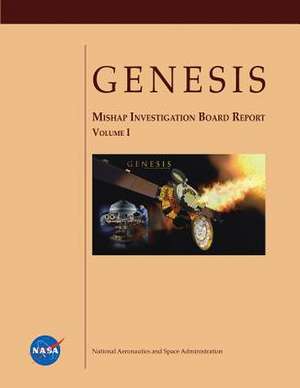Genesis Mishap Investigation Board Report (Volume I)
Autor National Aeronautics and Administrationen Limba Engleză Paperback
Preț: 167.38 lei
Nou
Puncte Express: 251
Preț estimativ în valută:
32.04€ • 34.81$ • 26.93£
32.04€ • 34.81$ • 26.93£
Carte disponibilă
Livrare economică 31 martie-14 aprilie
Preluare comenzi: 021 569.72.76
Specificații
ISBN-13: 9781480279797
ISBN-10: 148027979X
Pagini: 234
Dimensiuni: 216 x 280 x 12 mm
Greutate: 0.55 kg
Editura: CREATESPACE
ISBN-10: 148027979X
Pagini: 234
Dimensiuni: 216 x 280 x 12 mm
Greutate: 0.55 kg
Editura: CREATESPACE
